
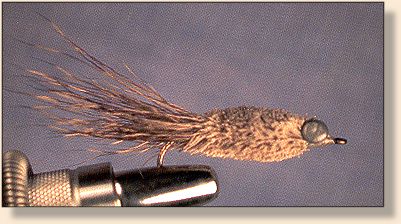 Henry's Crawfish Deke Meyer Photos by the Author
|
|
|
Tying Tips
Variations
|
|
Tying Steps: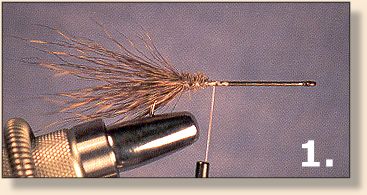
1. Debarb hook, insert in vise and attach thread. Tie in deer hair tail,
length equals hook shank. (Don't worry about making the hairs ends
even since crawfish claws are unruly, we are merely suggesting them.)
Trim excess hair where tied down.
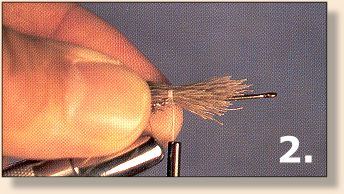 2. Wrap two loose turns around a pencil-thick bunch of deer hair and hook shank (while holding hair).
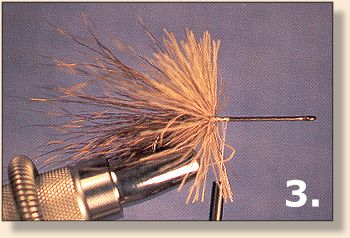 3. Release hair while pulling straight down on thread. As hair flares around hook, wrap one tight turn of thread around hair. Stroke hair back to the rear, bring thread forward through hair, wrap one turn around hook shank in front of hair. Push hair back with hair pusher tool or ends of fingers. Make an overhand or granny knot (called half hitch) with thread around hook shank, push tight up against hair and tighten knot. (A half hitch tool is helpful.) Wrap thread 1/4 inch ahead of hair.
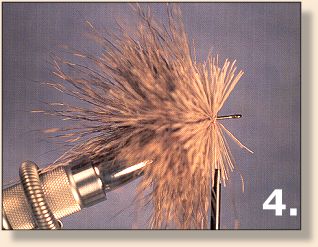 4. Repeat Step 3 until hook shank covered, but leave room for the eyes and whip finished head.
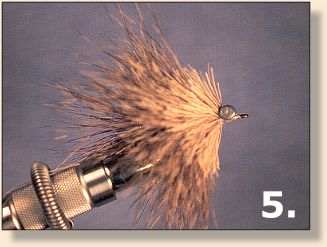 5. Tie down barbell eyes on top of hook securely, whip finish and cement head.
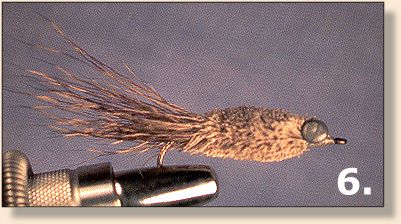 6. Trim hair flat on top and bottom and as wide as the eyes. (Don't worry about it too much. Fly is in the vise for the photo; it's easier to trim the fly out of the vise.)
Fishing Henry's Crawfish:
For more great flies, check out: Beginning Fly Tying and Intermediate Fly Tying.
|